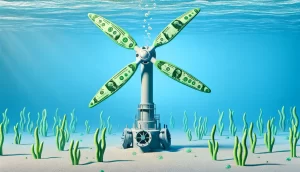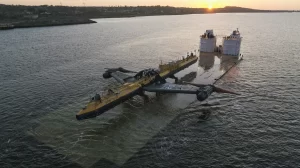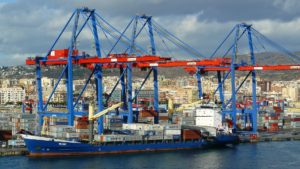It’s hurricane season for the North Atlantic and many coastal denizens are monitoring weather forecasts like a teenager monitors their TikTok feed. Especially this year which has turned into one of the busiest ever for tropical storms. Storm forecasts are immensely important to help society plan and prepare. For example, a family in the path of an approaching storm would likely want to know whether the storm surge will be nine feet or 18 feet above normal levels, it could be the difference between moderately inconvenient flooding and having their house completely submerged.
Predicting storm intensity requires a feed of ocean data before, during, and after a storm develops. These data are crucial to the accuracy of forecasting models, but getting these data isn’t always easy. Ocean data collection in the middle of a raging storm is dangerous for people in ships and planes and challenging for autonomous robots. A new prize competition offered by the US Department of Energy and the National Oceanic and Atmospheric Administration hopes to change this paradigm.
The Ocean Observing Prize
The Ocean Observing Prize is offering up to $2.4 million in cash prizes for teams to develop novel wave energy-harvesting, self-charging, autonomous underwater vehicles (AUVs) that could be used for hurricane monitoring. This recent announcement launches the second competition within the Ocean Observing Prize (the first was launched late last year and winners announced this past spring). This new phase, called the DEVELOP Competition, is composed of three sequential contests. The first contest, Design Contest, opened on October 19, 2020 and tasks teams to design a prototype system over the next four months. Subsequent contests, aptly named the Build and Splash Contests, tasks teams to build and test their prototypes in a tank and then at-sea, respectively.

During the Ocean Observing Prize contestants will be designing their systems to meet the demanding requirements for hurricane monitoring. Using robotic systems to monitor hurricanes has been around for decades, but the prize hopes to bring in fresh ideas by forcing teams to consider wave energy as a renewable energy source. By using plentiful ocean waves DOE and NOAA hope to solve one of the largest limitations for present-day ocean observing technologies: persistent energy.
Energy Constraints and Data Collection
When collecting ocean data at sea, researchers often play a balancing game with deployment time, how much data they can collect, and battery size. The hurricane season in the North Atlantic lasts for about six months, from June through November, and even with austere power restrictions (and therefore limited data collection), researchers struggle to get their systems to last this long on batteries alone.
When batteries become depleted the system fails to function and risks being lost-at-sea. To recharge there are two options. One option is to recover the system with a ship and crew and replenish the batteries, but this is operationally taxing and expensive and defeats the purpose of an “autonomous” or “unmanned” vehicle.
A second option is to have the system self-charge its batteries using renewable energy such as solar, wind, waves, or currents. This method is commonly employed by unmanned surface vehicles such as the Wave Glider or Saildrone, but these vehicles are largely relegated to two-dimensional operations at the ocean’s surface and miss valuable ocean measurements beneath the surface. Plus, exposed at the surface isn’t the best place during an intense storm at sea. An underwater vehicle has better odds in storm survivability and is able to collect data throughout the water column, but has less access to renewable resources such as solar and wind. Wave energy could be the energy source that has been long sought by the underwater robotics community.
This Ocean Observing Prize is focused on self-charging autonomous underwater vehicles for hurricane monitoring, but this system is suitable for a number of other applications: from subsea pipeline inspections to exploring under ice shelves or even surveying invasive species. This Ocean Observing Prize is just the beginning of perhaps a new wave of capabilities for long duration ocean observations.
Join the Challenge via the HeroX platform. The first round of the DEVELOP Competition will close on February 16, 2020
Note: while the Wave Glider does utilize wave energy, it is purely for propulsion of the vehicle and does not provide electrical energy to replenish the batteries.




